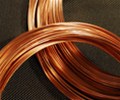TRADING REVIEW: TC/RC copper concentrate to be pressured in Q4 by replenishing demand from smelters

This report is part of the S&P Global Commodity Insights Metals Trading Review series, in which we dig into data sets and digest some of the key trends in iron ore, metallurgical coal, copper, alumina, cobalt, lithium, nickel, and steel and scrap. We also explore what might happen in the next few months, from changes in supply and demand to new arbitrageurs, and fluctuations in quality gaps.
Copper concentrate processing and refining costs in Asia will likely come under pressure in Q4 with replenished demand from smelters for 2026 production, after the previous quarter TC/RC was supported by increased copper concentrate supplies from Indonesia and some smelter maintenance, market players told Platts, part of S&P Global Commodity Insights.
A short-term spike in copper supplies from Indonesia’s Grasberg mine was seen in the third quarter, as the start-up of PT Smelting’s Gresik smelter was delayed due to oxygen plant repair work following a maintenance shutdown, resulting in more than 100,000 mt of unprocessed copper, Platts reported previously.
Some other smelters in China have also scheduled maintenance from September to November, reducing demand for copper cargoes loaded from July to October, market sources said. Japan’s Mitsubishi Materials also reduced copper demand due to low TC/RC, Platts reported previously.
Platts assessed CIF China net copper concentrate processing and refining costs at minus $41.30/mt and minus 4.13 cents/lb, respectively, as of Oct. 10, up from year-to-date lows of minus $50.50/mt and minus 5.05 cents/lb, respectively, on June 6.
However, supply pressure remained in the fourth quarter after Freeport-McMoRan halted operations at its Grasberg mine in Indonesia on September 8 following flooding. Market players also said that they currently see little chance of the Indonesian government allowing the export of PT Amman’s Batu Hijau copper in the fourth quarter, as this would have to cover the copper concentrate shortage caused by Grasberg. PT Amman did not respond to a request for comment.
Canada’s Hudbay Minerals also announced the temporary closure of its Constancia plant operations in Peru amid widespread protests on September 23.
Market players said they were also increasingly concerned about falling sulfuric acid prices, which is an important factor in supporting smelter cash flow this year. Platts valued FOB China sulfuric acid at $67.50/mt on Sept. 24, down 27.4% from its peak on Aug. 27.
This development also impacted the recent tender for delivery of loads in 2026, which was completed at minus $100s/mt, widening the gap between 2026 merchant purchases and smelter spot purchases to $60-$70/mt TC.
Spot volume plummeted in Q3
Spot copper purchases at Chinese smelters fell 34% quarter-on-quarter to 1.46 million mt in Q3, according to data from a Platts survey. The decline was mainly due to traders allocating more supply through futures contracts, along with an increase in TC/RC, market sources said.
Spot copper demand also eased as smelters restocked for earlier Q4 loading shipments, and mill turnaround schedules.
Traders said they expect to receive at least minus $40s/mt from smelters for clean copper concentrate loadings in Q4, while most smelters are eyeing minus $30s/mt for spot purchases. Traders added that they prefer to make deliveries through long-term contracts based on index prices or allocate through pre-agreed options with smelters.
Smelters’ strong preference for high-quality clean copper concentrate has impacted market demand for high-impurity copper concentrate. To increase general market liquidity for copper concentrate, traders are also seen selling multiple grades and grades as combined packages to smelters.
In Q3, a wider spread was also seen between high gold grade copper concentrate and standard clean concentrate, as smelters faced higher funding costs when purchasing high gold concentrate amid soaring gold prices.
Import premiums increase due to limited supply
China’s copper cathode import premium increased in the third quarter due to limited supply, although higher copper prices reduced demand in September.
Supply is increasingly limited due to Chinese smelter maintenance from September to November, Indonesian smelter production problems, low availability from Africa due to electricity shortages, and slowing domestic transportation. The elimination of tax refunds on copper scrap production in China’s Jiangxi province was also a factor.
Spot cathode premiums in Southeast Asia rose to over $120/mt on a CIF basis in early October, compared with futures premiums of $80/mt, due to the impact of the Grasberg mine shutdown.
This increase occurred as Chile’s total copper shipments fell 9.9% to 1.459 million mt during January-September, reflecting smelter closures and a decline in electrowon production. Shipments to China fell 31.6% to 343,419 million tons in the same period.
Arbitrage opportunities between prices on the CME and LME exchanges also support the spot premium. Traders are interested in buying CME-listed copper for shipment to the US.
S&P Global Commodity Insights analyst Wang Ruilin said that China’s copper demand could get an extra boost if State Grid Corp. China increased orders in late October, mainly because its cumulative investment was below 50% of the annual plan in the first half of 2025.
Restocking of cathodes by end users slowed after copper prices traded well above $10,000/mt in late September, and import premiums weakened due to a negative import arbitrage window.
Platts assessed the CIF China copper import premium at $55/mt on 10 October, down from a peak of $110/mt on 15 May.
Source: Platts
